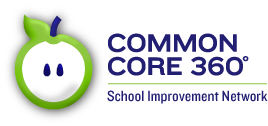Summertime for many educators means more time for reading, including professional selections we’ve wanted to tackle all year long but haven’t been able to fit into the nooks and crannies of our school-year lives. For me, the challenge isn’t finding professional literature to read, but rather selecting that which I should read. Crafting my own professional learning text set is just the solution I need. A text set is a collection of articles, videos, books, blogs, and other material that allows students to build their knowledge and vocabulary on a particular topic. In a well-crafted text set, the selections being at the student’s entry point and then build in complexity as the student gains more knowledge, vocabulary, and confidence. It’s a powerful approach that is useful across all content areas. It can be just as powerful for us educators and our professional learning.
Step 1
The first decision is the focus to use for the text set. What is it you really want to learn about this summer? This can sometimes be the hardest decision. If you’re like me, there is so much still to learn about teaching and learning, and is seems like people are always writing more books that will be such excellent choices. The benefit of a text set is that rather than getting a smattering of this or snippet of that, we can develop a deeper understanding of our selected focus. (Suggestion: if you’re struggling to find a focus for your text set, consider checking out Achieve the Core’s Summer Reading Challenge.)
Step 2: Find the Texts
Now that you have a focus in mind, it’s time to start gathering those texts. Remember that the term text doesn’t refer only to the printed word. What about including that podcast you’d heard about a few weeks ago, but never got around to listening to? Does the Teaching Channel have a video on the topic? As for the printed word, books aren’t the only option. Consider blogs. Remember that the goal here is simply gathering the set of texts you will use–you do not have to read the entire work to decide whether or not to include it. Don’t make your text set so large that it is overwhelming. Text sets don’t have to be long. A set of four or five pieces might be just fine.
Step 3: Sequence the Texts
Putting the texts into a sequence is another important step. While you might be excited about reading that article from the professional journal, if your topic is brand-new to you, you might want to start with the video, podcast, or blog post. The goal is building knowledge and vocabulary, so starting with a good entry point will keep the reading interesting and even exciting. Starting at a point that is too difficult could make the text set turn into a chore.
Step 4: READ!
Once the focus, texts, and sequence are decided, it’s time to dig into the reading. As you work through your set, be flexible. Maybe you’re ready for that journal article earlier than you thought–read it earlier, then! Or maybe that blog post looked like it was going to be great, but by the second paragraph, it’s clear that it’s not really focused on your topic. In that case, set it aside and move on. It’s your professional learning text set, and it needs to be practical and useful for YOU.
Step 5: Reflect
Just as we want our students to consider what they’ve learned and then apply it in some way, so we need to do the same with our learning. How does what we’ve learned change our perspectives? What changes will we make in what we are doing in our classrooms and roles as educators? Reflect, envision, and plan for how to implement what you’ve learned in the year to come.
If you’re interested in collaborating with others, why not set up a professional text set for a small group study? If you have two or three topics you want to consider this summer, try crafting smaller text sets. Creating and using a professional text set and using it is a great way to deepen your learning and practice the process of developing text sets for students.
